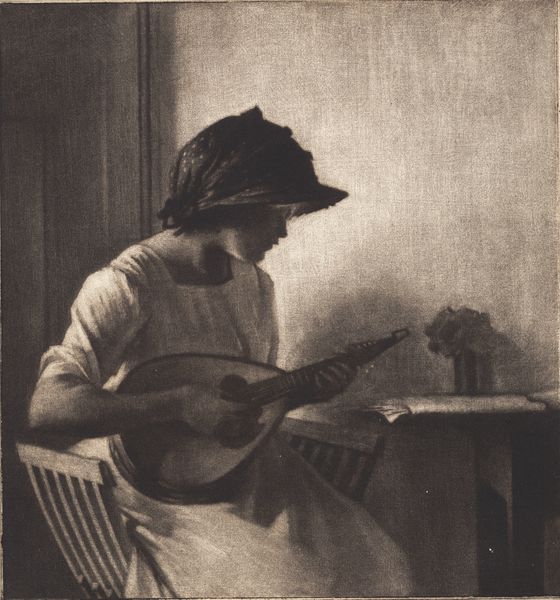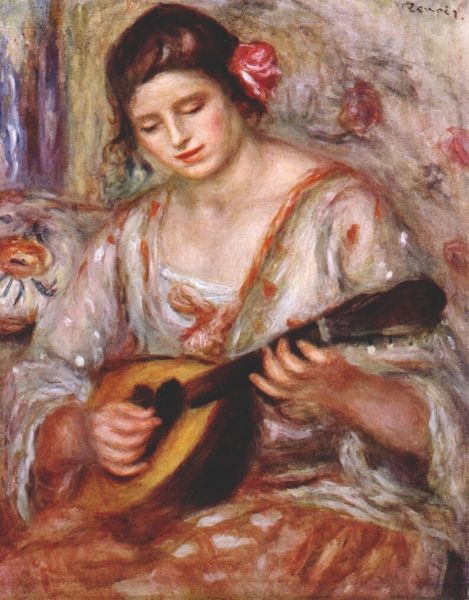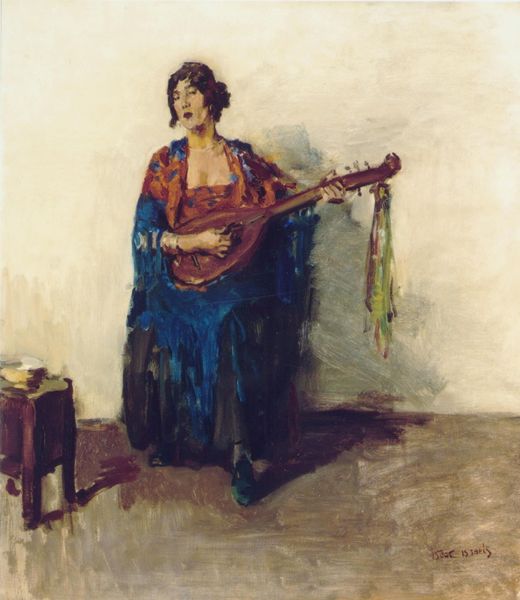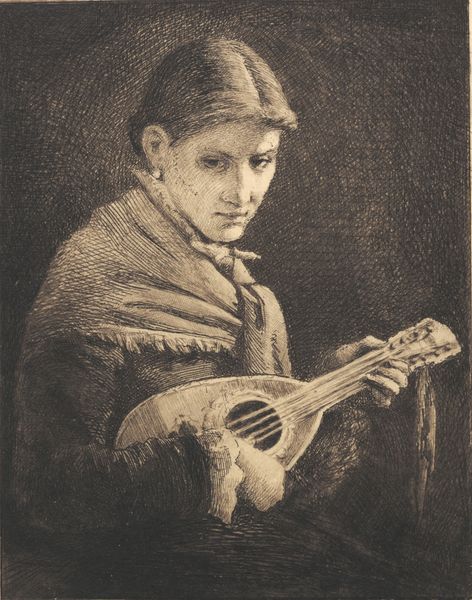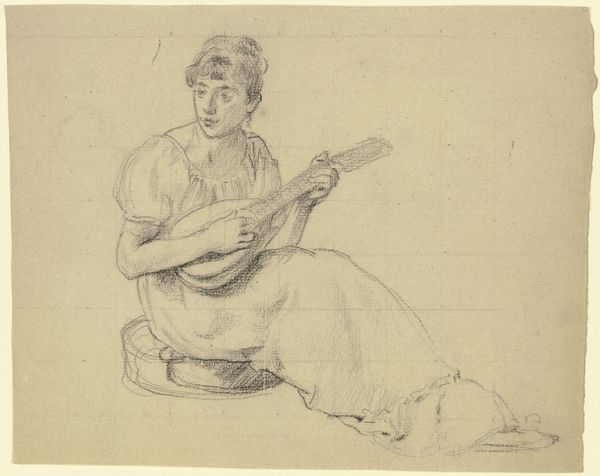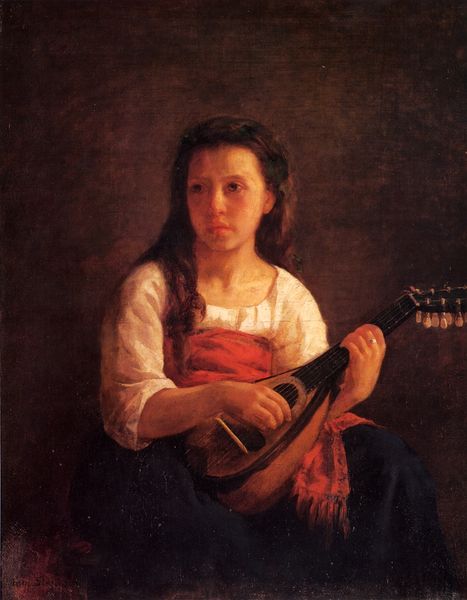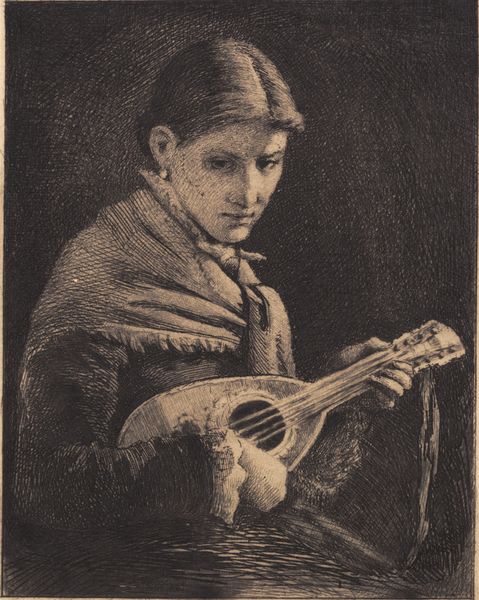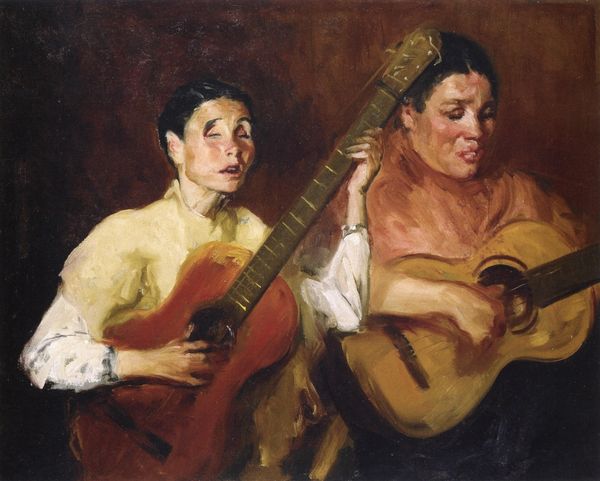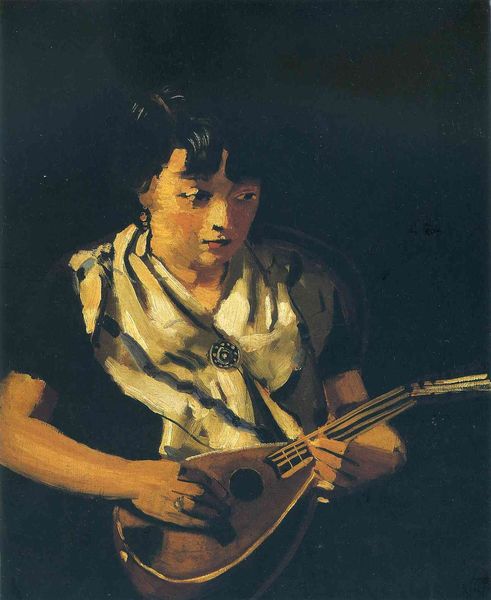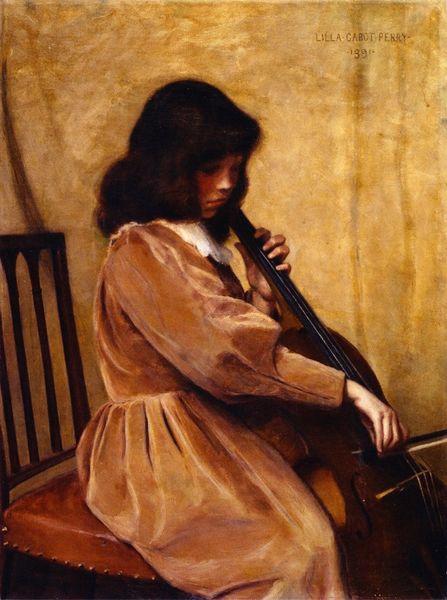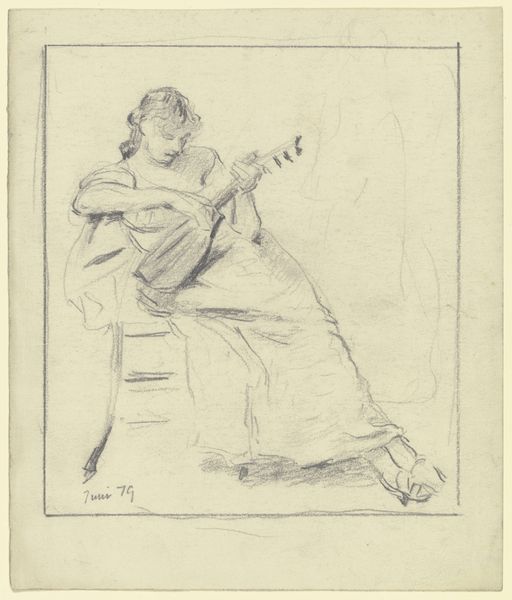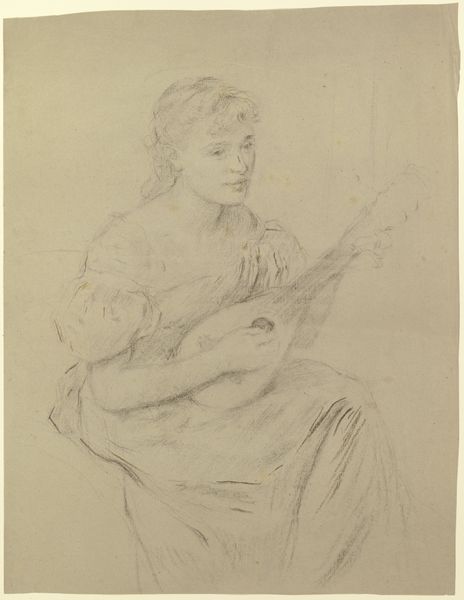
drawing, print, etching
#
portrait
#
drawing
# print
#
etching
#
charcoal drawing
#
figuration
#
portrait drawing
#
genre-painting
Dimensions: 266 mm (height) x 198 mm (width) (plademaal)
Curator: This is "Mandolinspillende dame," or "Woman Playing the Mandolin," a print executed via etching by Frans Schwartz, created sometime between 1865 and 1917. Editor: The density of lines here is astonishing. It gives the whole composition an incredible tonal richness despite the limited palette. A study in contrasts, certainly. Curator: Indeed. Schwartz was known for his figuration, often finding inspiration in genre painting. This portrait captures an intimate moment; it speaks to the performative and gendered spaces of musical expression. I think it important to reflect on how societal expectations may shape an individual's relationship to creative output. Was this a personal or a public moment? Editor: Looking closer at the etching technique, I am fascinated by the ways the artist uses cross-hatching to build volume and shadow. See how the delicate gradations create a sense of depth, almost sculptural in its effect. Notice especially the folds in her clothing and the gentle curve of her face. Curator: Considering the timeframe in which this portrait was created, one cannot ignore how the artwork participates in the romanticisation of domesticity. This depiction encourages consideration about what it meant for women in particular to make art, to create, and to be muses. This speaks volumes about identity and artistic labour. Editor: But observe how Schwartz manages to suggest a complex interplay of light across different textures: the smooth, polished wood of the mandolin against the softer, more yielding fabric of her robe. This interplay lends the scene a palpable sense of depth and realism, regardless of our interpretation. Curator: This work really forces us to look at these portrayals critically; understanding that these moments were also constructed in alignment with distinct aesthetic and societal values can prompt deeper conversations. Editor: A fine work that beautifully shows how formalism, attention to technicality, light and form, can open discussions and prompt reflections of values through time.
Comments
No comments
Be the first to comment and join the conversation on the ultimate creative platform.

